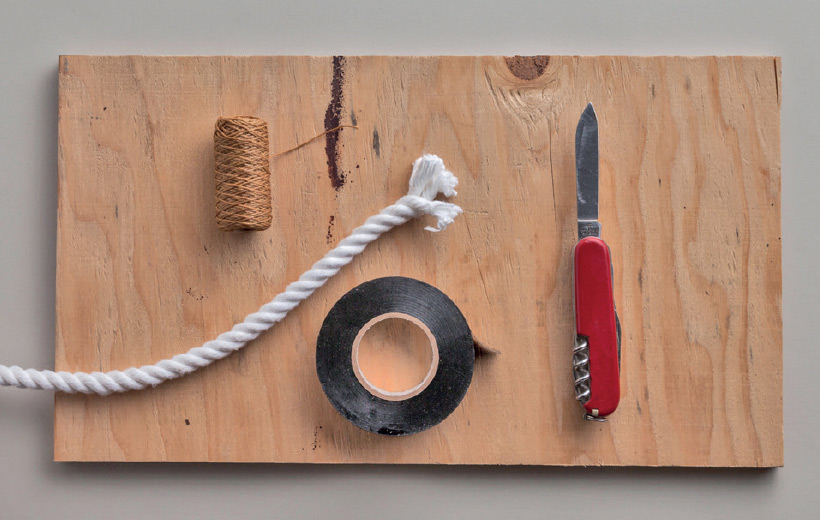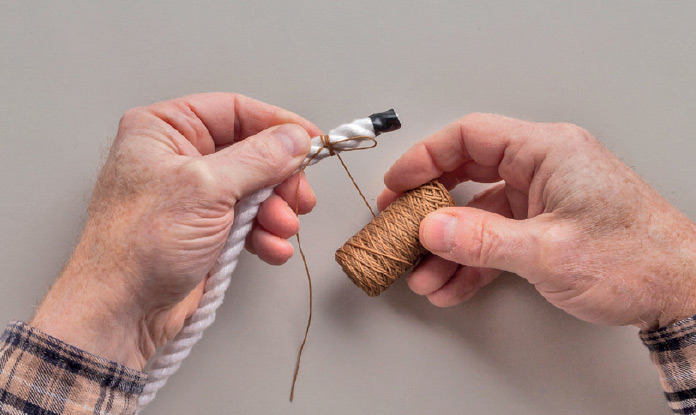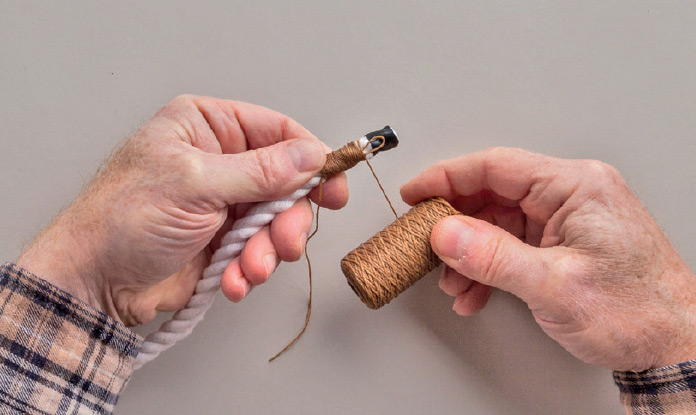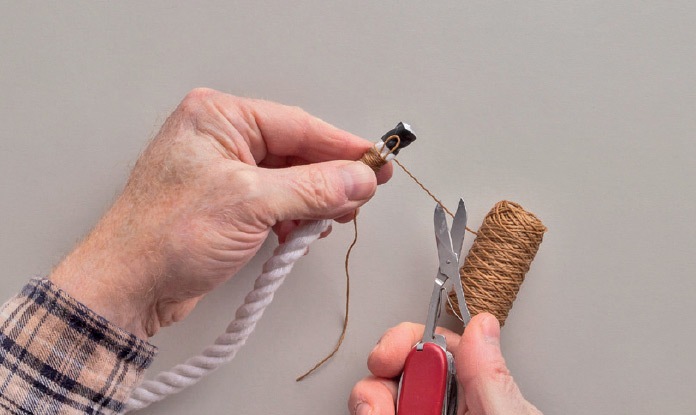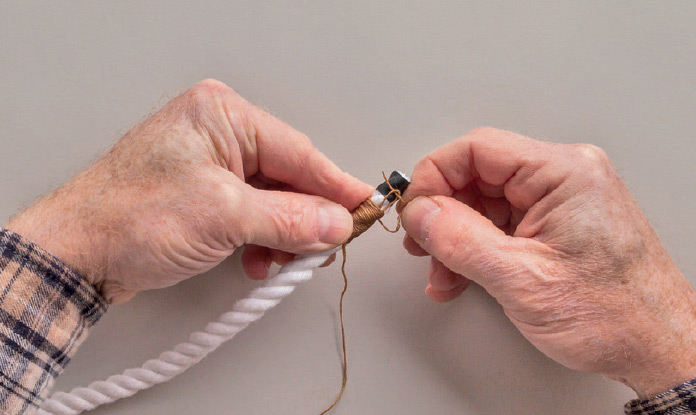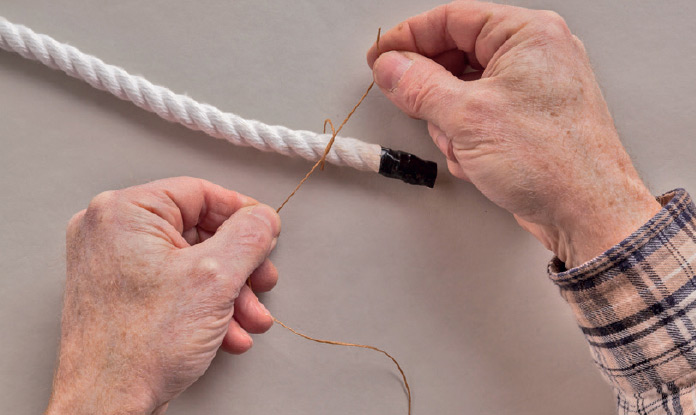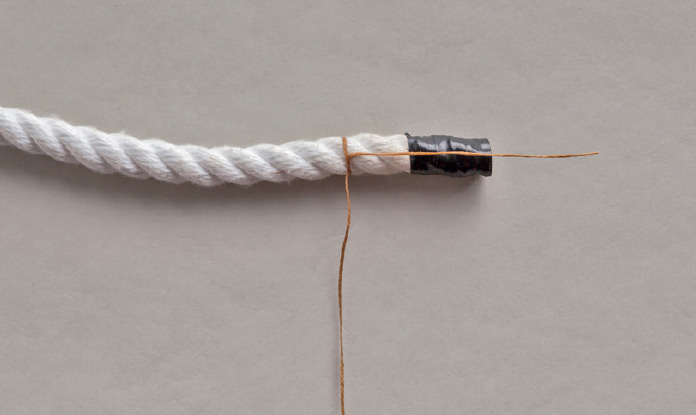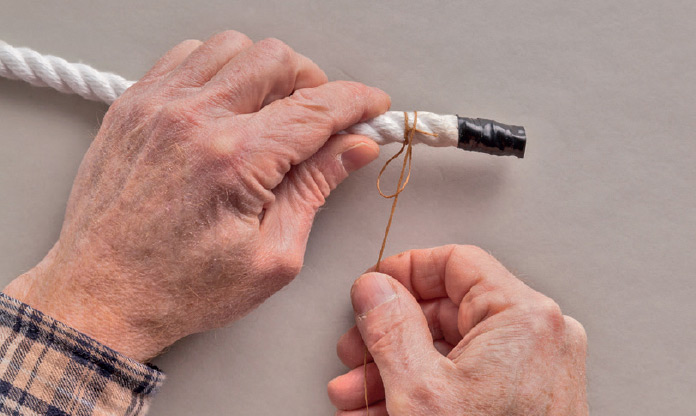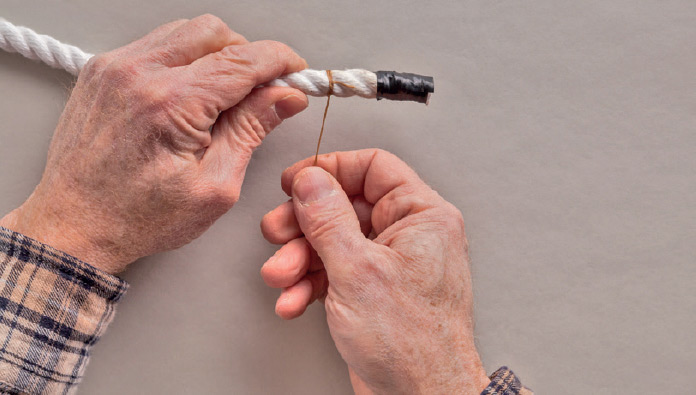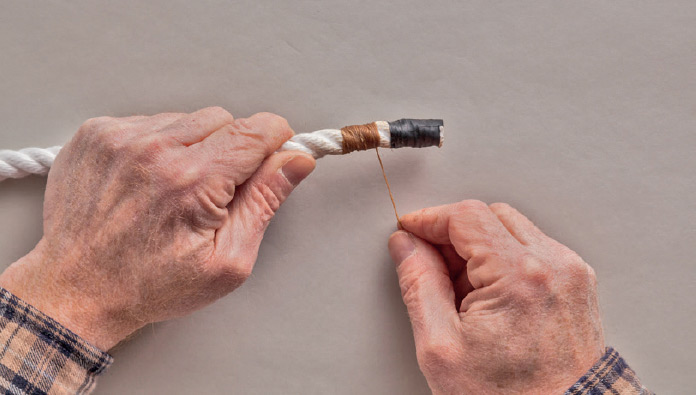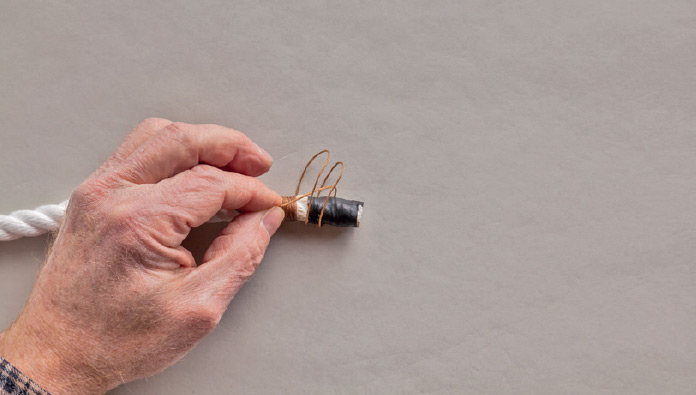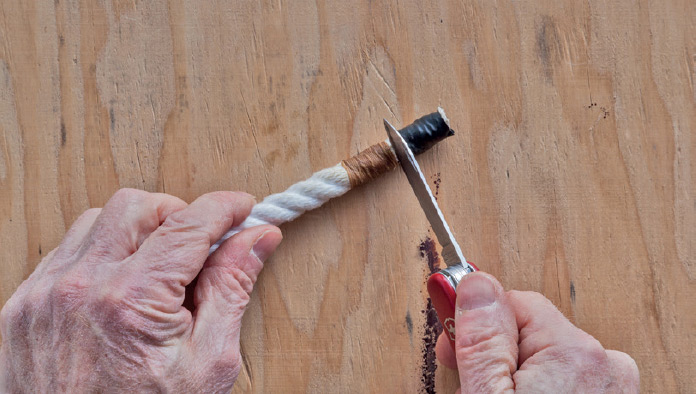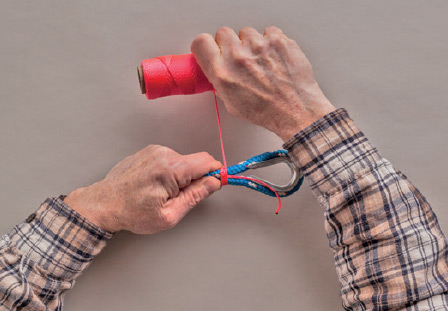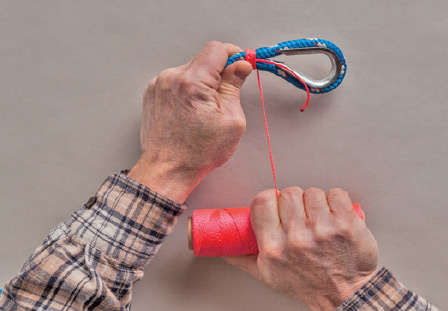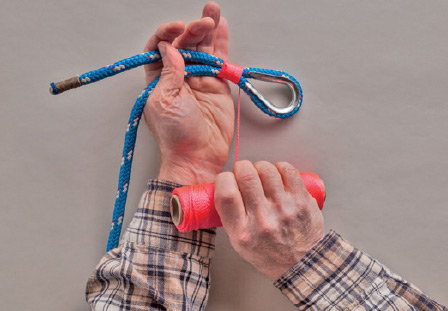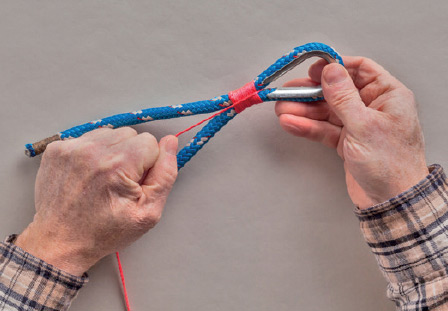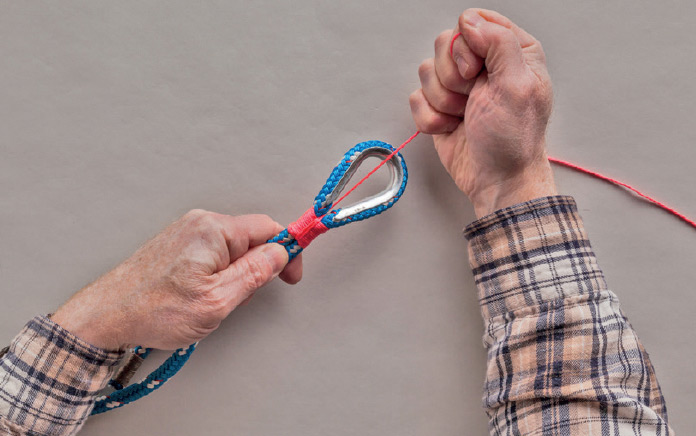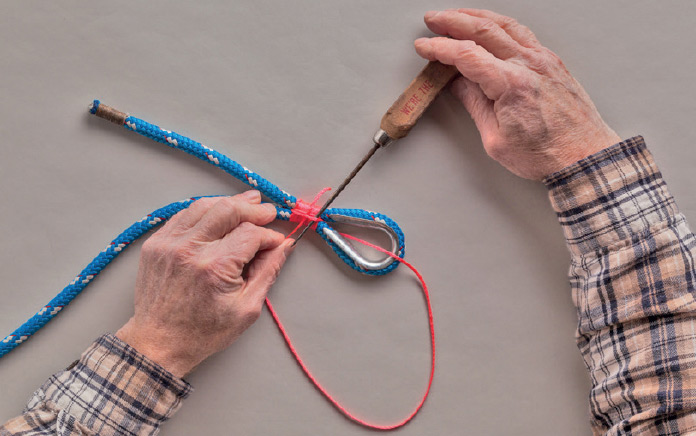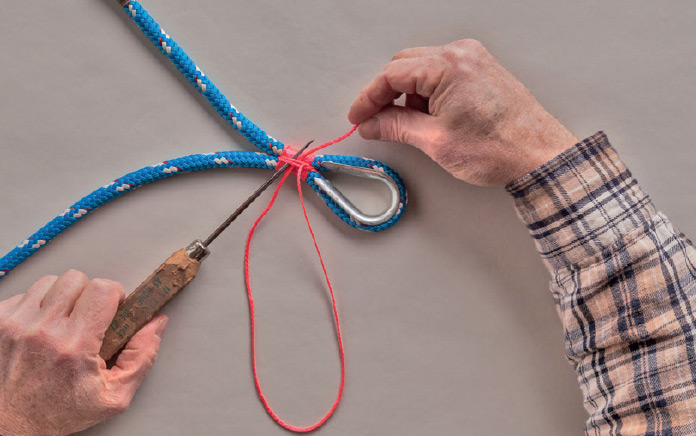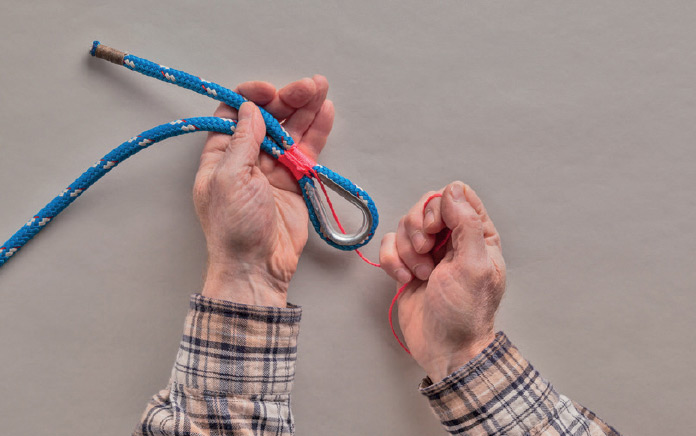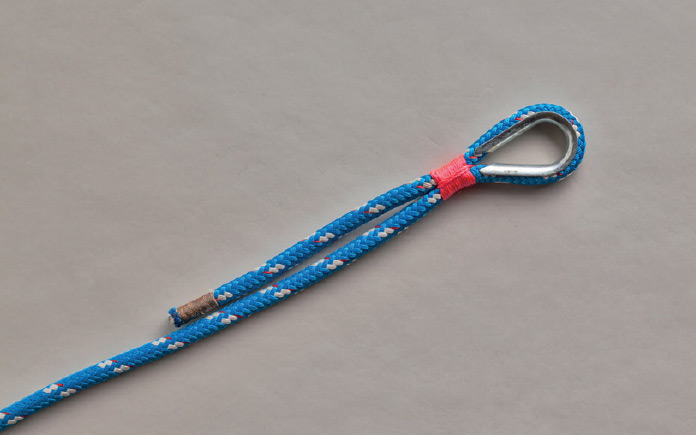Part Nine
Whipping and Seizing
There are many ways to prevent the end of a rope from unraveling (see ), but whipping is by far the most effective. Whipping involves binding the rope’s strands or yarns with a tight wrapping of heavy thread or light twine. This seemingly imposing task is actually quite easy, and after doing it once or twice, you’ll find it second nature. Seizing is a similar procedure to permanently join two lengths of rope or sections of the same rope. A seized eye in the end of a rope is stronger, more secure, and more compact than any loop knot.
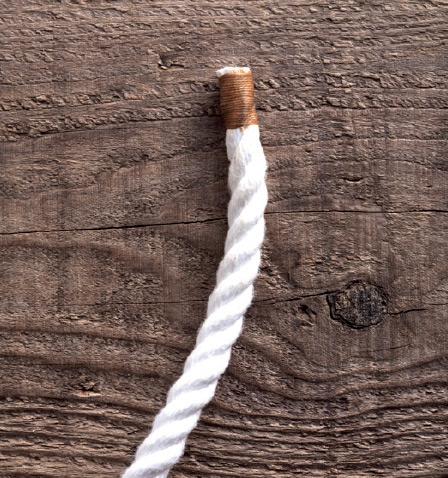
Uses: prevent fraying; mark positions on rope
Pros: easy, quick, and effective
Cons: whipping will unravel if the thread breaks
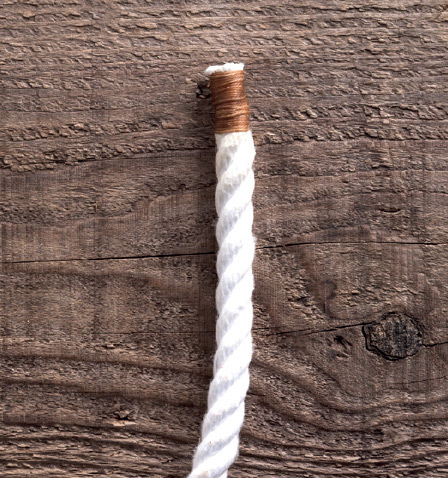
Uses: prevent fraying; mark positions on rope; as service to prevent abrasion
Pros: resists unraveling if cut
Cons: more time-consuming than Common Whipping
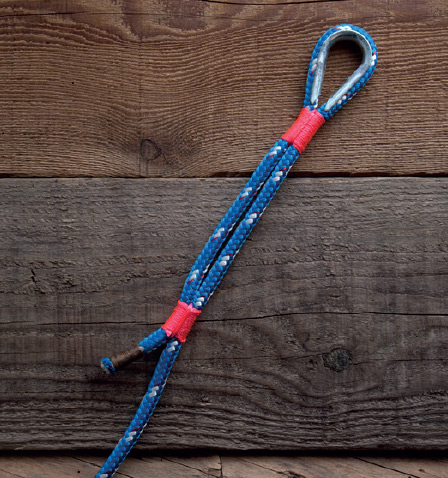
Uses: eyes; joining ropes for length or doubling; fastening rope to a shaft
Pros: stronger, more secure, uses less rope, and less bulky than knots
Cons: more difficult and time-consuming than knots; cannot be untied
